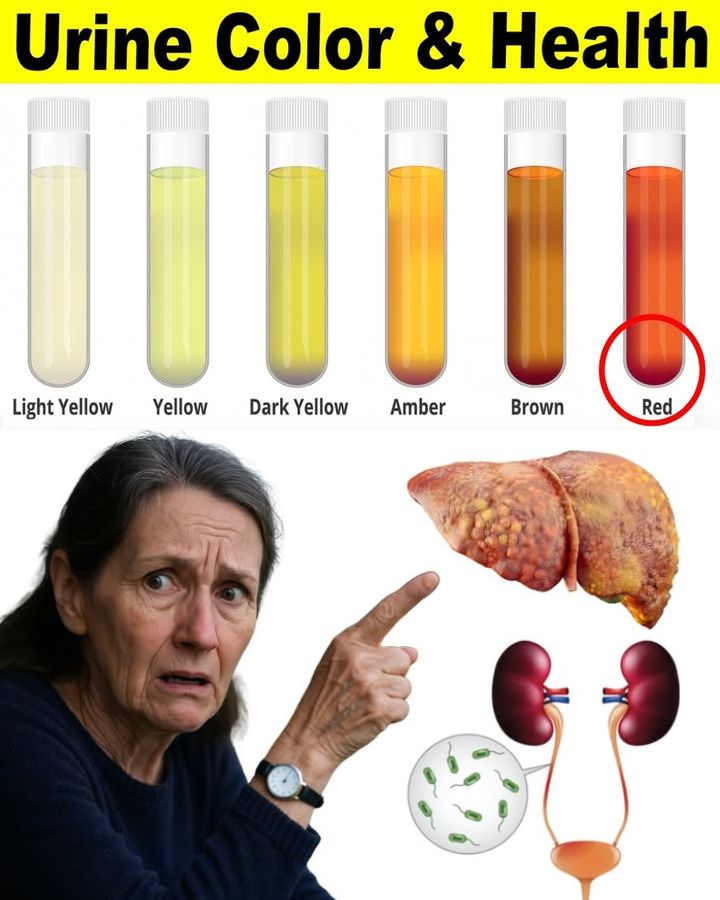What you should do:
Keep doing what you’re doing. Continue drinking water throughout the day, especially during hot weather or after physical activity. This is the “gold standard” of pee color—literally and figuratively.
🌟 Bright or Neon Yellow Urine
What it means:
A vivid yellow or even neon appearance can be shocking, but it’s usually harmless. The most common cause is vitamin B2 (riboflavin) or B-complex supplements, which your body excretes when it has more than it needs.
Should you worry?
Not at all. It just means your body is eliminating extra vitamins. This is particularly common after taking multivitamins. Unless accompanied by other symptoms, there’s no need for concern.
🧡 Dark Yellow or Amber Urine
What it means:
When your urine shifts to a dark yellow or amber color, it’s often a sign that you’re slightly dehydrated. The darker tone results from your body conserving water and concentrating waste materials in the urine.
What you can do:
Drink a few glasses of water and check again in a couple of hours. If your urine returns to a lighter shade, you’ve successfully rehydrated. It’s a simple fix, and an important reminder to keep a water bottle nearby.
🟠 Orange Urine
What it means:
Orange urine may be caused by mild dehydration, certain medications, or even issues with liver function. If accompanied by symptoms such as yellowing of the skin or light-colored stools, liver health should be evaluated.
When to take action:
If the orange color persists or is paired with other symptoms like fatigue, dark eyes, or abdominal pain, it’s time to consult a healthcare professional. Don’t ignore it if it keeps happening.
🩸 Pink or Red Urine
What it means:
Sometimes, red or pink urine is harmless and caused by food like beets, blackberries, or rhubarb. However, it can also be a warning sign of blood in the urine—a condition known as hematuria.
When to see a doctor:
If you haven’t eaten any red-colored foods and still notice pink or red urine, it’s essential to seek medical advice. Causes may include urinary tract infections, kidney stones, or more serious issues like bladder problems.
🟤 Dark Brown or Cola-Colored Urine
What it means:
Urine that appears brown, cola-colored, or very dark could indicate severe dehydration, liver problems, or even a condition called rhabdomyolysis, which involves muscle breakdown. Certain medications and foods can also contribute to the discoloration.
What you should do:
Seek medical help promptly, especially if you also feel muscle pain, fatigue, or nausea. This isn’t a color to overlook—it’s your body raising a red flag that something might be wrong internally.
💙 Blue or 💚 Green Urine
What it means:
Though rare, blue or green urine can happen. Some medications or artificial dyes in food and drinks may cause this surprising color change. There are also uncommon genetic conditions that can trigger blue urine.
